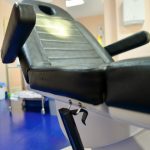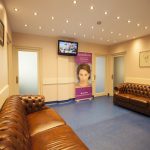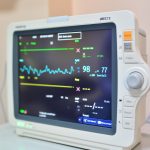Otoplasty or “pinnaplasty” is an surgical operation that is usually performed to correct prominent ears and bring them closer to the side of the head, but it also can be used to correct excessive ears.
Some children are born with prominent ears, but it is possible that in the first months of life, to use a splint, which could help in retreading ear shape, thus avoiding further surgery. This splint can correct simple deformities and restore prominent ears within 2 weeks. These splints are designed and built specifically to correct the problem because the ear of a child is extremely soft and easy to shape.
Splints are mounted on the ear and secured by narrow strips of tape. Then the whole ear is attached to the side of the head using a wide strip. The splint pressure to the ear cartilage restores the tendency to stand out, while keeping the rest of the own contours of the ear.
Otoplasty surgery is performed on children after the age of six or on adults. After age 6 ears are almost fully developed and cartilage is relatively easy to reshape. Prominent ears can be a social problem for the school child.
What does the surgery involve?
At the initial consult, the surgeon will evaluate ears and determine what is necessary to be done in order to achieve the desired shape. There are several techniques that can be used to reshape protruding ears.
An often used technique involves removing a small ellipse of skin behind the ear, in order to expose the ear cartilage and then the surgeon can reshape the cartilage, thus creating a natural form and a normal position relative to the head.
Otoplasty surgery usually takes between one and two hours, although complicated procedures may take longer.
In adult patients, the surgery is performed under local anesthesia.
After the surgery, the head will be wrapped in a bandage for 7 days long. After this period, the stitches will be removed. The bandage helps for a favorable healing. Postoperatory, the pain it’s resolved by administration of common painkillers.Otoplastia sau „pinnaplasty” este o operație care se face de obicei pentru corectarea urechilor proeminente și a le aduce mai aproape de partea laterală a capului , dar poate fi de asemenea folosită pentru a corecta urechile prea mari.
Unii copii se nasc cu urechile proeminente, dar este posibil ca, în primele luni de viață să se utilizeze o atelă, care ar putea ajuta la reșaparea formei urechii, evitându-se astfel intervențiile chirurgicale ulterioare. Aceasta atelă poate corecta deformări simple și readuce înapoi urechile proeminente într-un interval de 2 săptămâni. Aceste atele sunt proiectate și realizate special pentru a corecta problema datorită faptului că urechea unui copil este extrem de moale și ușor de modelat.
Atelele sunt montate pe ureche și fixate prin fâșii înguste de bandă. Apoi întreaga ureche este lipită pe partea laterală a capului folosind o bandă largă . Presiunea de la atelă pe cartilajul urechii restabilește tendința de a iesi în afară , menținând totodată contururile proprii ale restului urechii.
Operația de otoplastie se efectuează la copii după vârsta de șase ani sau la persoanele adulte. După vârsta de 6 ani urechile sunt aproape pe deplin dezvoltate și cartilajul relativ ușor de remodelat . Urechile proeminente pot constitui o problemă socială pentru copilul școlar.
Ce implică operația?
La consultația inițială , chirurgul va evalua urechile și va stabili ceea ce este necesar pentru a ajunge la forma dorită . Există mai multe tehnici care pot fi utilizate pentru a remodela urechile proeminente.
O tehnică folosită deseori implică îndepărtarea unei mici elipse de piele din spatele urechii pentru a expune cartilajul urechii și apoi chirurgul poate remodela
cartilajul creându-se astfel un aspect natural și o poziție normală în raport cu capul.
Otoplastia durează de obicei între una și două ore, cu toate că procedurile mai complicate pot dura mai mult.
În cazul pacienților adulți, operația se efectuează sub anestezie locală.
După operație, capul va fi înfășurat într-un bandaj care se va păstra timp de 7 zile. După această perioadă se vor îndepărta și firele de sutură. Acest bandaj ajută la o vindecare favorabilă. Postoperator, durerea se remite cu administrarea de calmante uzuale.









